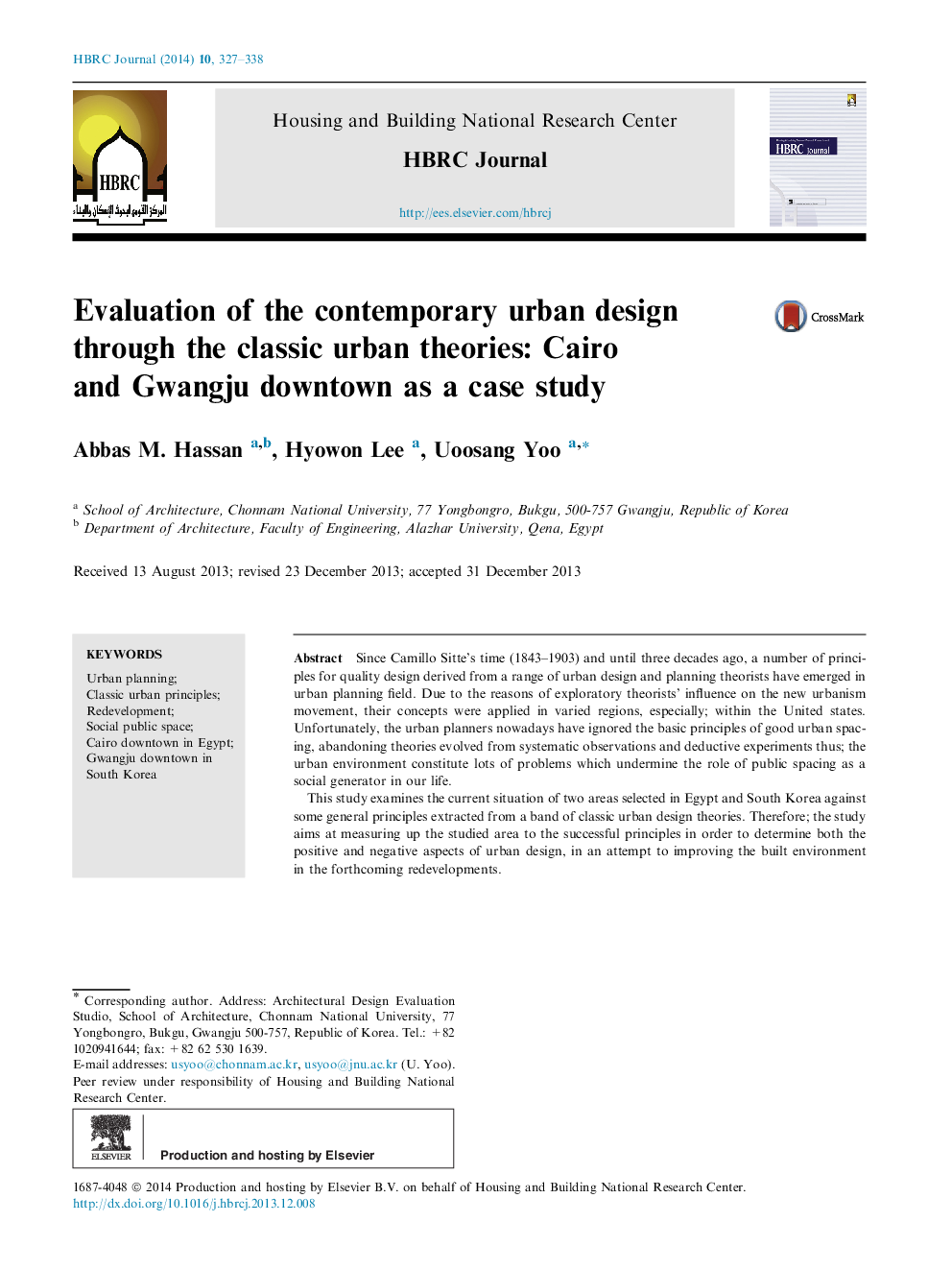| Article ID | Journal | Published Year | Pages | File Type |
|---|---|---|---|---|
| 274662 | HBRC Journal | 2014 | 12 Pages |
Since Camillo Sitte’s time (1843–1903) and until three decades ago, a number of principles for quality design derived from a range of urban design and planning theorists have emerged in urban planning field. Due to the reasons of exploratory theorists’ influence on the new urbanism movement, their concepts were applied in varied regions, especially; within the United states. Unfortunately, the urban planners nowadays have ignored the basic principles of good urban spacing, abandoning theories evolved from systematic observations and deductive experiments thus; the urban environment constitute lots of problems which undermine the role of public spacing as a social generator in our life.This study examines the current situation of two areas selected in Egypt and South Korea against some general principles extracted from a band of classic urban design theories. Therefore; the study aims at measuring up the studied area to the successful principles in order to determine both the positive and negative aspects of urban design, in an attempt to improving the built environment in the forthcoming redevelopments.The result showed some encouraging aspects of the studied area, especially in Cairo downtown of Egypt which appears to be consistent with classic urban design theories, but Gwangju downtown of South Korea still has some problems, and as a result, there are overriding concerns that could well undermine such positive elements.
